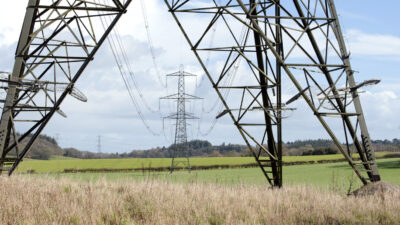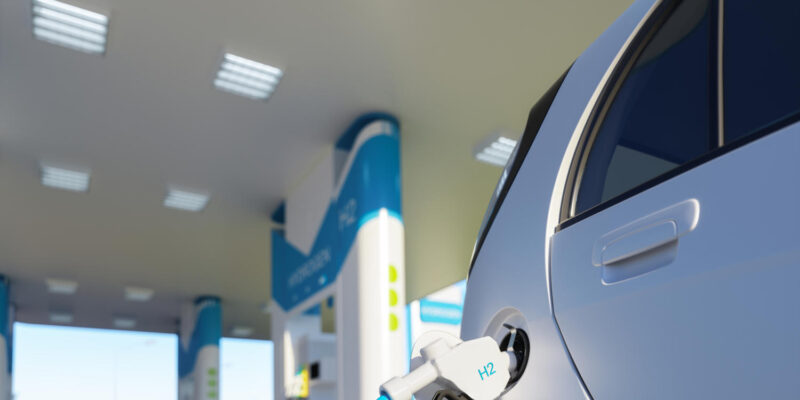High time for hydrogen: establishing a hydrogen value chain in Europe (part 2)
Across Europe and around the world, hydrogen is gaining traction as a low-carbon energy source with new use cases. In this two-part series, we provide an overview of key strategic developments for hydrogen in the EU and the UK. Our first article introduced the hydrogen value chain and associated upstream issues (i.e. production). Here, we focus on the midstream (i.e. storage and transportation) and downstream (i.e. usage) elements of the value chain.
The EU’s hydrogen strategy1 and Energy System Integration Strategy,2 along with the UK government’s Hydrogen Strategy,3 include guidance on the storage, transportation and usage of hydrogen. But what exactly are the issues in the midstream and downstream elements of the value chain?
Midstream: building up the capacity for hydrogen transportation
As hydrogen production begins to ramp up, it is crucial to consider the distribution of hydrogen from suppliers to end-users, and the storage of excess hydrogen (i.e. that which is not used immediately).
As discussed in the first part of this series, hydrogen is typically transported through pipelines (in gaseous form), and using non-pipeline means such as road and rail vehicles and marine vessels (in gaseous or liquid form). For non-pipeline transportation, hydrogen is either compressed and stored in high-pressure tube trailers, or liquefied and stored in liquid tankers. While the cryogenic liquefaction process is technically complicated and expensive, over longer distances the liquid tankers are more economically efficient than high-pressure tube trailers, as the former can hold a much larger mass of hydrogen.4
On the one hand, pipelines are more appropriate for high-volume transportation to clustered industrial users. On the other hand, non-pipeline channels can be useful for refuelling potentially remote end-users in the transportation sector, such as buses, heavy goods vehicles (HGVs) and, in the future, potentially hydrogen-fuelled aeroplanes and sea-going vessels.5
The crucial importance of hydrogen transportation raises questions about how this part of the value chain should be regulated such that it strikes a balance between reducing investment risks and delivering value for money to customers. Unlike the sector for gas and electricity transmission and distribution networks, where many regional monopolies were already in place when regulations were introduced, the hydrogen transportation networks are, for the most part, yet to be developed—or adapted from existing gas networks. Therefore, regulation for hydrogen networks needs to be dynamic and adequately reflect the ongoing changes in the hydrogen value chain, as acknowledged by the EU and UK in their respective hydrogen strategies.
Specifically, the need for regulatory clarity, awareness and flexibility is echoed in the existing publications. For the EU, the initial stage of developing hydrogen transportation facilities will focus on ‘point-to-point’ connections between production and demand, in industrial clusters and coastal areas.6 The Commission has suggested that these closed distribution systems could be regulated in a similar way to direct lines and closed distribution networks in the current EU Gas and Electricity Directives, where exemptions on issues such as exclusive access and vertical integration are provided.7
When longer-distance transportation is required for the second phase of development of the nationwide hydrogen transportation networks, new regulation will need to be introduced to provide more comprehensive oversight, and existing policies such as the Trans-European Networks for Energy (TEN-E) and Trans-European Transport Network (TEN-T) will need to be revised. While the Commission has made it clear that ‘hydrogen infrastructure should be accessible to all on a non-discriminatory basis’,8 the introduction of detailed regulation will be at the discretion of national regulatory authorities, and will ultimately depend on developments in the hydrogen market over time. For example, if vertically integrated companies are found to be abusing their market position and denying access to network infrastructure to upstream competitors, regulatory interventions such as unbundling may be needed.9
In Germany, a new hydrogen regulation passed in June 2021 already specifies a requirement for unbundling between production and distribution.10 The network companies also have the option to participate in proposed opt-in regulation, where participants would be regulated under the proposed hydrogen regulatory regime and receive a pre-determined return on equity through network tariffs. This opt-in feature allows investors to determine their own trade-off between risk and return. For example, investors who are cautiously optimistic might prefer a pre-determined return on capital through the proposed regulation, and those with more confidence in the growth of hydrogen demand might decide to operate without regulation on price and returns.11
For the UK, while the key regulatory concerns such as third-party access and ownership structure are also brought up in the national strategies, no regulatory changes have yet been specified. The government is currently undertaking a number of consultations and assessments, and will ‘provide information on the status and outputs of its hydrogen network review in early 2022’.12 Both the EU and UK acknowledge that regulatory certainty and clarity will help to attract investment by mitigating the risk of ex post regulatory interventions.
Aside from building new hydrogen networks, the repurposing of existing gas networks requires regulatory attention to avoid the stranding of these assets. If the use of natural gas begins to decline as part of the green transition, it might be cost-efficient to repurpose natural gas network assets for hydrogen and other low-carbon gas transportation, rather than building new networks. Rigorous and bespoke cost–benefit analyses are needed to determine the cost-efficiency of investment decisions in the adaptation and/or development of network assets. Relevant factors in adapting or developing hydrogen transport networks are likely to include:
- the expected cost of repurposing existing natural gas assets;
- the projected cost of building new hydrogen transportation networks;
- the likely cost of decommissioning existing natural gas assets;
- expectations around existing and future demand for hydrogen in the geographical regions covered by the existing natural gas pipelines. One question is whether the launch of repurposed pipelines can synchronise with the development of demand by different use cases (for example, whether there is a timetable for users to come on board, and regional uptake expectations).
As with the issue of vertical unbundling of hydrogen production and transportation, regulation can play a role in managing cross-subsidisation between gas and hydrogen network users. If there is a cross-subsidy from gas users to hydrogen users, this could lead to unintended consequences for consumers, because the transition of users from gas networks to hydrogen networks is likely to require time as the hydrogen value chain matures.13 To avoid cross-subsidisation, the EU Agency for the Cooperation of Energy Regulators (ACER) and Council of European Energy Regulators (CEER) recommend using independent cost-recovery instruments, such as a separate regulatory asset base, to remunerate hydrogen assets.14
To build a synchronised hydrogen supply chain, hydrogen storage is as important as hydrogen transportation, particularly in use cases such as transportation (e.g. vehicle refuelling) and industry (where storage allows for greater efficiency by offering higher security of supply and greater flexibility for internal balancing in the case of large-scale industrial productions). In particular, future storage needs for hydrogen might be greater than today’s storage needs for natural gas, as no natural reserves of hydrogen are available for immediate use in the case of high demand.15 To be used as a flexible power source, storage of renewable hydrogen is an effective way of preserving excess renewable power, which could help to smooth out the inherent seasonality of some other renewable sources (e.g. wind and solar). Regulatory attention for this segment of the value chain is likely to focus on the relative advantages of different storage methods, and the funding and remuneration of high-cost storage methods. For example, while specialist tankers and storage vessels are cheaper to construct and have shorter lead times for development, underground (e.g. salt cavern) and undersea (e.g. depleted oil fields) storage sources have lower per-unit costs of storage due to significantly larger storage capacity. The choice of storage mix will ultimately depend on the resources available to the country in question, the envisioned use case for hydrogen, and the opportunity costs of each method (for example, undersea storage of hydrogen could compete with undersea storage of CO2).16
Downstream: leveraging the power of hydrogen for different use cases
Sustainable and diversified demand will be the foundation of the development of a healthy hydrogen economy. Broadly, existing and future demand for hydrogen can be categorised into four main categories.
- Industrial, which includes the production of metals and minerals, chemicals, food and drink, paper and pulp, ceramics, glass, and oil. Many of these sectors are considered to be ‘hard to electrify’, since renewable electricity cannot be used directly in the production process. The introduction of renewable and low-carbon hydrogen (and hydrogen derivatives) may therefore provide viable routes to decarbonisation for these sectors.
- Transportation—in particular, buses, trains and HGVs. Ongoing research into hydrogen-fuelled aeroplanes and seagoing vehicles may also stimulate demand for hydrogen in the future.
- Power, which utilises the flexibility of renewable hydrogen production and storage to allow excess renewable electricity to flow across different parts of the system, creating ‘sector coupling’. Specifically, as a storage medium for renewable power, hydrogen allows for the coupling of energy supply and demand across sectors (e.g. industrial, transportation, power and heating), helping to balance the seasonal nature of renewable generation from certain technologies (e.g. wind and solar). More broadly, this coupling helps to better integrate hydrogen into the national energy mix by facilitating a better balancing of electricity grids.
- Heating—while the feasibility of using pure hydrogen in heating needs to be studied further, existing research on the blending of hydrogen17 and natural gas suggests that hydrogen could play an important role in the decarbonisation of the heating sector.
Across the UK and EU member states, the various hydrogen use cases set out above are being explored and developed in parallel, with the industrial sector arguably leading on demand for hydrogen. Notably, all four use cases are mentioned in the national hydrogen strategies of the UK, Germany and Italy, as well as in the EU-wide hydrogen strategy. Within each use case, progress and priorities are closely associated with country-specific factors.
For the industrial sector, it is notable that steel and chemical production appear in the list of top priorities for the UK, Germany and Italy. In particular, as Germany and Italy boast the largest and second-largest steel production sectors in the EU respectively,18 both countries present strong demand potential for reducing carbon emissions through the adoption of renewable and low-carbon hydrogen. As highlighted by the Italian government, hydrogen represents the only zero-carbon alternative in the production of direct reduced iron (DRI), which can be used to avoid the high-emissions production of cast iron from blast furnaces.19
In the transport sector, governments have set different priorities for different modes of transport. For the UK, since rail is already one of the greenest20 ways of moving people and goods, more emphasis is placed on buses and HGVs as well as research and feasibility studies for maritime and aviation.21 In contrast, Germany has achieved a head start on the application of hydrogen in rail transport, where passenger hydrogen trains are already fully operative and are expected to be used regularly by travellers.22 In Italy, where approximately one-third of the railways are dedicated to diesel trains, the government has considered hydrogen trains as an economically viable substitute for the old diesel locomotives, where direct electrification is not technically feasible.23
Hydrogen’s role in the power sector is shaped largely by its flexibility in both generation and storage. While low-carbon hydrogen can be used (either as a blend or as a 100% input) for flexible power generation to meet seasonal and/or long-term excess demand that cannot be met by natural gas (‘gas-to-power’),24 excess renewable energy can be used in electrolysis to produce renewable hydrogen, which can then be stored for future uses (‘power-to-gas’). Combined with the developments in hydrogen storage and transportation infrastructures, the power-to-gas process can allow excess renewable energy to be stored and distributed in an efficient manner. It is also useful in balancing the seasonal nature of renewable generation (for example, the generation uncertainties and relatively low load factors associated with wind and solar).
With respect to the application of hydrogen in heating, research and development are still at an early stage. For example, the UK is still studying the feasibility of hydrogen in meeting the diversity of heat demand across different building types and geographies. Under the current plan, the UK government is aiming to conduct a neighbourhood heating trial by 2023 and a village-scale heating trial by 2025. A consultation will also be launched in late 2021 to gain further insights into the conversion of new natural gas boilers to ‘hydrogen-ready’ appliances by 2026.25 Similarly, Germany is expecting to provide funding for ‘hydrogen-ready’ installations under the Combined Heat and Power Act.26
Looking ahead: using regulation to promote investment incentives and protect consumer interests
In this series of two articles, we have discussed the existing regulatory commitments and unsolved challenges faced by the hydrogen value chain, for both the supply side and the demand side. While the regulatory priorities differ across countries, a common theme is that of establishing a clear focus on reducing production costs, setting up transportation and storage facilities, and establishing demand projections under different use cases. While adequate investments across the value chain are required to achieve these ambiguous goals, investment incentives can be activated when policymakers and regulators provide clarity on their envisioned regulatory framework, including on issues relating to remuneration, competition, length of regulatory periods, safety, and technology priorities—with input from experienced professionals and the wider public. Only when there is transparent policy and regulatory guidance in place can investors assess the risks and returns associated with investing in the hydrogen value chain.
1 European Commission (2020), ‘A hydrogen strategy for a climate-neutral Europe’.
2 European Commission (2020), ‘Power a climate-neutral economy: An EU Strategy for Energy System Integration’.
3 HM Government (2021), ‘UK Hydrogen Strategy’, August.
4 For more detail, see US Department of Energy (2021), ‘Hydrogen Delivery’.
5 For example, distribution of hydrogen by tube trailers can serve refuelling stations at locations where it is infeasible to be piped. See HM Government (2021), ‘Tees Valley Multi-Modal Hydrogen Transport Hub Masterplan’, 17 March, p. 8.
6 European Commission (2020), ‘A hydrogen strategy for a climate-neutral Europe’, p. 14.
7 ACER (2021), ‘When and How to Regulate Hydrogen Networks?’, February, p. 6.
8 Ibid., p. 16.
9 For example, see ACER (2021), ‘When and How to Regulate Hydrogen Networks?’, February, p. 4.
10 Clifford Chance (2021), ‘Focus on Hydrogen: Germany Implements First Pure Hydrogen Midstream Regulation and Introduces Definition for Green Hydrogen’, 28 June, p. 2.
11 For more details on the opt-in regulation, see Eversheds Sutherland (2021), ‘Germany sets regulatory framework for green hydrogen production and hydrogen grid projects’, 6 July.
12 HM Government (2021), ‘UK Hydrogen Strategy’, August, p. 44.
13 For example, if the profits from transporting gas are used to subsidise the development of a hydrogen network, this could facilitate initial operations of the hydrogen network with no guarantee of its long-term stand-alone viability and thereby the stability of supply for users.
14 ACER (2021), ‘When and How to Regulate Hydrogen Networks?’, February, p. 8.
15 HM Government (2021), ‘UK Hydrogen Strategy’, August, p. 46.
16 Ibid., p. 45.
17 For more details, see the first article in this series: Oxera (2021), ‘High time for hydrogen: establishing a hydrogen value chain in Europe (part 1)’, Agenda, October.
18 See Italian government (2021), ‘Piano Nazionale di Ripresa e Resilienza. Part 2: Description of reforms and investments – Component M2C2’, p. 49.
19 Ibid., p. 43.
20 For example, train travel has one of the lowest emission rates per passenger among all modes of transport, with emission figures similar to those for electric cars. See UK Department for Transport (2021), ‘Transport and Environment Statistics 2021 Annual report’, 11 May, p. 3.
21 HM Government (2021), ‘UK Hydrogen Strategy’, August, pp. 66–8.
22 See Fortune (2021), ‘A hydrogen-powered train will make transport history as Europe looks to become world leader in green rail travel’, 23 April.
23 Italian government (2021), ‘Piano Nazionale di Ripresa e Resilienza. Part 2: Description of reforms and investments – Component M2C2’, p. 55.
24 For example, hydrogen blends could be used to ease natural gas shortages in the future that are similar to the one currently being experienced by the UK and EU.
25 HM Government (2021), ‘UK Hydrogen Strategy’, August, p. 63.
26 German federal government (2020), ‘The National Hydrogen Strategy’, June, p. 22.
Related

Future of rail: how to shape a resilient and responsive Great British Railways
Great Britain’s railway is at a critical juncture, facing unprecedented pressures arising from changing travel patterns, ageing infrastructure, and ongoing financial strain. These challenges, exacerbated by the impacts of the pandemic and the imperative to achieve net zero, underscore the need for comprehensive and forward-looking reform. The UK government has proposed… Read More

Investing in distribution: ED3 and beyond
In the first quarter of this year the National Infrastructure Commission (NIC)1 published its vision for the UK’s electricity distribution network. Below, we review this in the context of Ofgem’s consultation on RIIO-ED32 and its published responses. One of the policy priorities is to ensure… Read More

